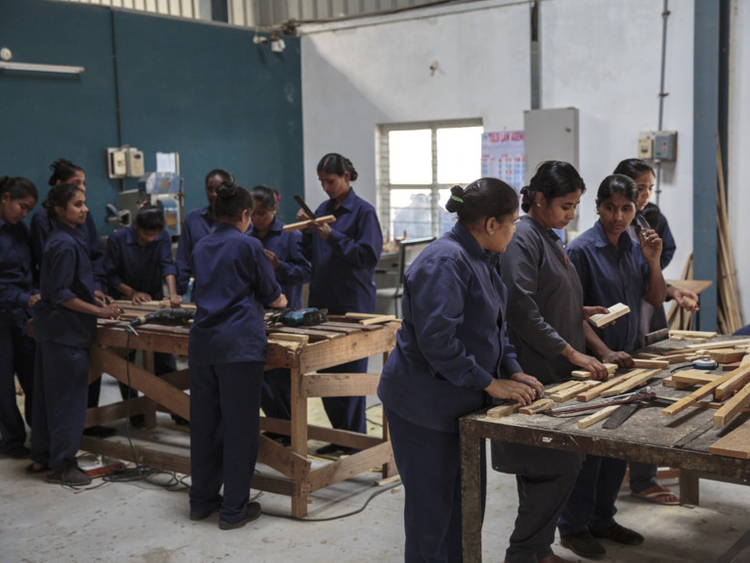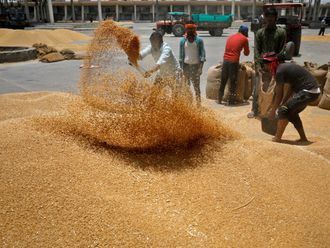
HYDERABAD, India
She was awarded one of India’s highest civilian honours, has brushed aside threats and travelled extensively despite them but on the day of the interview, Sunitha Krishnan looked a bit unnerved.
A few days earlier, several women posing as sex trafficking victims engineered an attack at a shelter Krishnan oversees about 50 kilometres from her office outside Hyderabad, in southern India. The women stormed a nursery filled with babies, smashed windows and stabbed staff with shards of glass, injuring a few of them seriously.
20,000
|
At her desk, Krishnan recalled a sobering moment after learning of the attack.
“As I was sitting here,” she said, “it suddenly sank in my brain: What if one of the children ...,” she broke off. “What if one of them is hurt? I crashed completely. I was crying and crying and crying.”
By “God’s grace,” she said, none of the babies were injured.
For more than two decades, Krishnan has led Prajwala, an organisation that rescues women and children from sex traffickers in Hyderabad and across India. The stories are horrifying.
During a TED Talk, Krishnan spoke of Shaheen, a toddler who was found near railway tracks and had been raped by so many men that her intestines spilled out.
Made enemies
In rescue facilities, girls are fed, educated and trained to work as welders or carpenters, among other professions. The complex that was attacked has a capacity of 1,200 people, Krishnan said, making it the largest of its kind in the world.
But Krishnan has made enemies, typically furious traffickers who have seen their profits dry up as girls are plucked off the streets by the police and placed in Prajwala’s shelters.
Krishnan said brushes with violence were part of her “regular existence.”
Besides sporadic attacks on the shelters, Krishnan dodged someone who tried to throw acid on her and witnessed the murder of a staff member by a group of pimps. She said she had been assaulted 17 times.
17
|
She is just one metre and 37cm tall, and her body bears reminders of trauma.
She has a bad back and has lost most of her hearing in one ear. But these incidents have only hardened Krishnan’s resolve.
When a girl is brought to a shelter, she said, the damage is bone-deep. The “profile of the person I am getting,” Krishnan said, is someone who “hates me, abuses me, spits on my face, doesn’t tell me her real name, doesn’t tell me her real address, is so hostile and aggressive toward me, and is happy to escape from my clutches.”
Of the 20,000 women and children who have been rescued, Krishnan said Prajwala had been able to keep tabs on 86 per cent of them, with many slowly regaining their ability to trust others. The remaining number are often trafficked again.
“We’re not 100 per cent successful, but we’re not 100 per cent a failure either,” she said. “We have demonstrated to the world that it is possible to change.”
High pain tolerance
Born in 1972 to a lower middle-class family in Bengaluru, Krishnan said she stood out from a young age. There was her pain tolerance, she said, and her “extraordinary ability to bring people together.”
Krishnan was also cunning, helping her to outmanoeuvre the traffickers she confronts today, she said.
By her teens, Krishnan had become a “hard-core social worker.”
But her interest in working with sex-trafficked women did not develop until she was 15, when Krishnan was sexually assaulted by eight men while working on a literacy campaign in a village.
It was this episode, and the anger she felt toward people who tried to write her off as a victim, that propelled Krishnan to start Prajwala.
“I don’t deny that I was a victim,” she said. “I don’t deny that I also took a lot of space and time to recover from that. But my healing was self-determined, and that is why I call myself a survivor.”
Still, she felt it was necessary to remind people of the importance of the work.
“If I, a small nobody with no background, nothing, just a small little 4 feet and 6 inches [1.37 metres], can do what I’m doing,” she said, “then more people can do what has to be done.”
— New York Times
News Service












